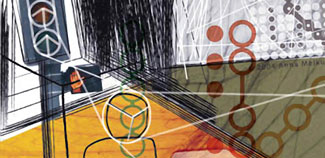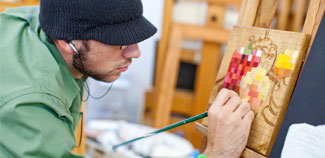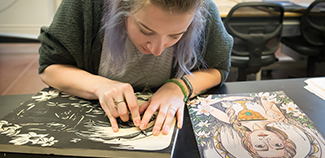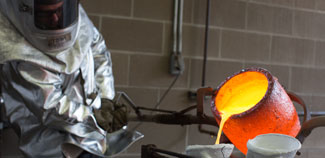Areas of Study
Art Education
The art K-12 teacher education program prepares students to teach visual arts in elementary, middle and secondary schools.
Ceramics
Students are introduced to the process of making ceramics beginning with clay body composition through procedures for firing kilns and glazing techniques and formulas.
Learn more about CeramicsDrawing
Emphasis includes composition, content, technical concerns, use of color and a range of material use from traditional to contemporary alternatives.
Learn more about Drawing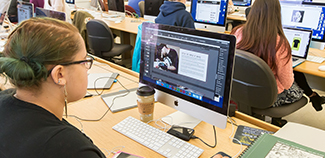
Graphic Design
Work as creative visual thinkers and communicators using a variety of traditional print and emerging digital media.
Integrated Media Arts
Courses that use a wide array of cutting-edge tools, including Augmented Reality (AR), Virtual Reality (VR), video projection, digital illustration, video production and game design.
Painting
Teaching technical painting ability and vocabulary, development of individual expression leading to thematic connections.
Photography
Provides fundamentals of photograpic imaging that aides in understanding of traditional techniques, experimental and non-traditional digital imaging.
Printmaking
Offers courses in Relief Printmaking, Monotypes, Screen Printing, and Letterpress.
Sculpture + Digital Fabrication
Learn a variety of sculpture making techniques including woodworking, moldmaking and casting, 3D printing, and mixed media.
Course Highlight
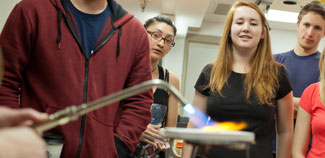
Metals
Metals classes at UNC present basic and advanced techniques and processes for the creation of wearable art. Nonferrous metals are used along with semi-precious stones and mixed media. In addition to wearable art, metals classes address historical and contemporary design concepts, critical analysis, and symbolism in fine art jewelry.
Foundations Classes
Foundations classes are exciting explorations of art history, design and studio techniques that everyone takes to build a strong knowledge and skill base for more advanced art classes.
A Mostly Online Art and Design Master's Degree
The Art and Design Master of Arts (MA) is a studio art degree for developing advanced expertise in artistic practice. It is designed as a perfect fit for current art educators who wish to build upon their credentials while developing as artists, teachers and leaders in art practice and education.




